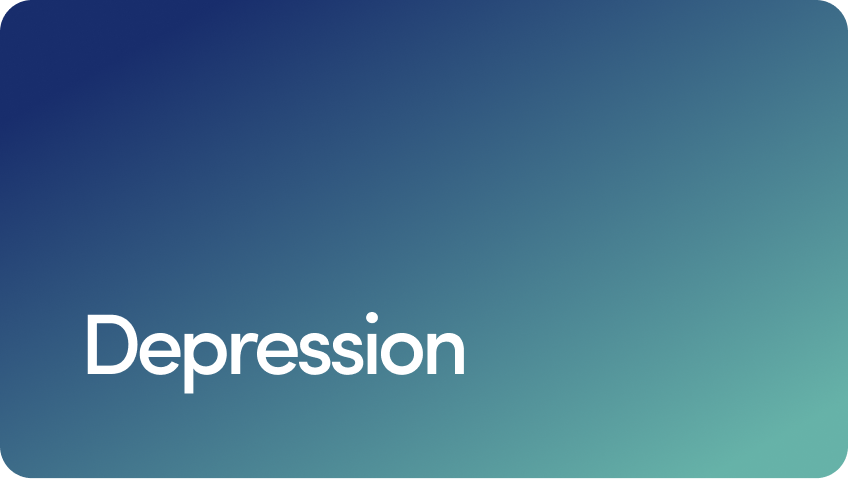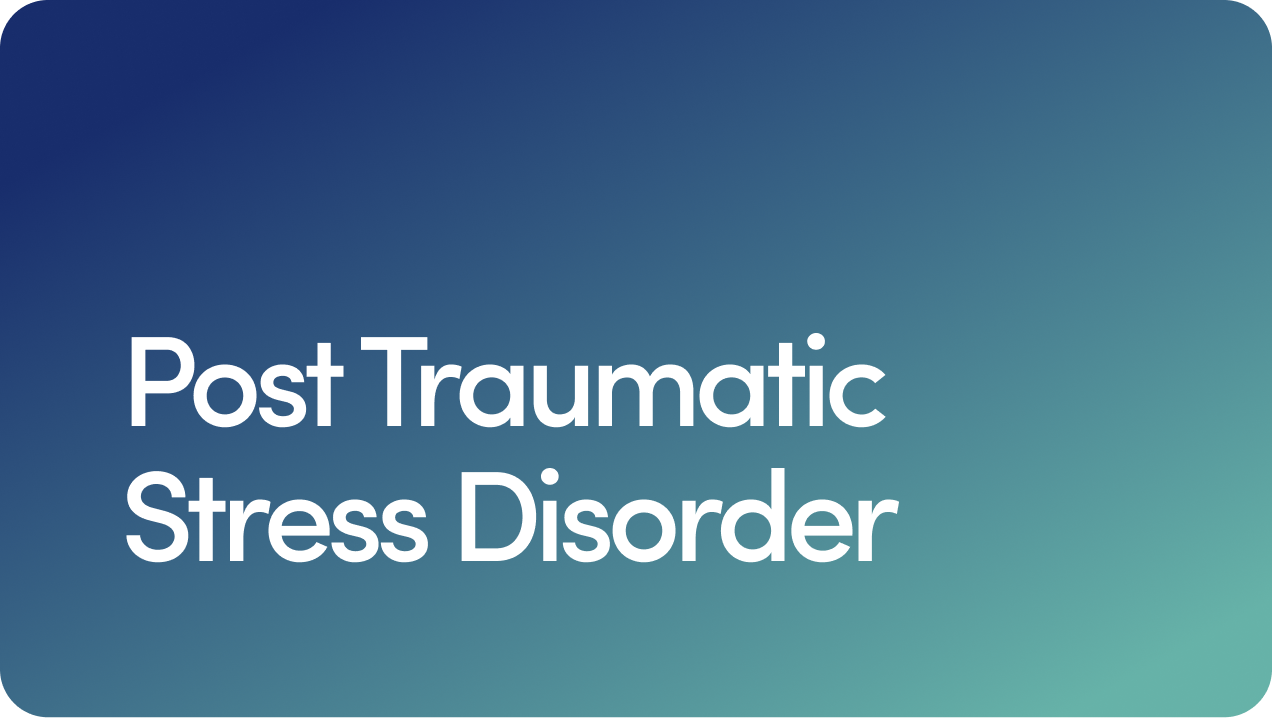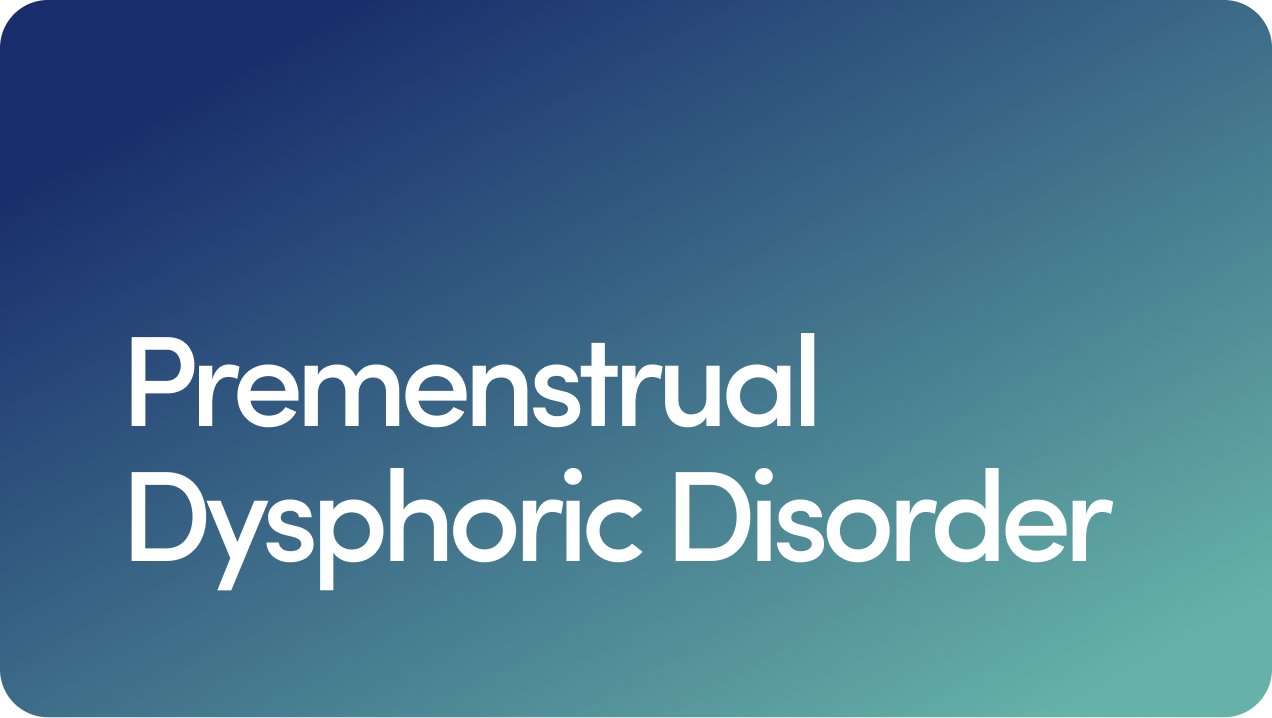Content
Free Mental Health Assessment
Fluoxetine (Prozac): Uses, Dosage & Side Effects

Prozac® (and the generic fluoxetine) is up there as one of the most recognizable medications to help with mental health problems.
It can help ease symptoms of anxiety disorders, depression, and even certain eating disorders. But like any other drug, Prozac isn’t for everyone, and it comes with potential side effects.
Let’s take a deep dive into how fluoxetine works and the factors to weigh if you’re considering this medication.
Content

What Is Fluoxetine (Prozac)?
Fluoxetine is the generic version of Prozac. It belongs to a class of medication called selective serotonin reuptake inhibitors (SSRIs). The drug lifts your mood by increasing the amount of serotonin — aka “the happy chemical” — available in your brain.
Though SSRIs technically are a type of antidepressant, they’re used to treat a range of mental health issues.
Fluoxetine was approved by the U.S. Food and Drug Administration (FDA) as a treatment for depression in 1987. It’s now approved to treat various mental health disorders, including panic disorder and obsessive-compulsive disorder (OCD).
When you start taking fluoxetine, you might notice your sleep, energy, and appetite improve within one to two weeks. But it can take six to eight weeks for the drug to fully kick in.
Fluoxetine Uses
Fluoxetine is FDA-approved to treat several mental illnesses. Some healthcare providers also prescribe it off-label for other conditions — that’s when a drug is prescribed for something it isn’t FDA-approved for.
Here’s what fluoxetine can be used for:
Major depressive disorder (MDD). Ongoing depression with feelings of guilt, sleep disturbances, and suicidal thoughts could be major depressive disorder. Fluoxetine is often an effective treatment method for this condition, with minor side effects.
Panic disorder. This mental health condition involves recurrent, unpredictable panic attacks. Based on their performance in clinical trials, SSRIs like fluoxetine are regularly used to help reduce panic symptoms.
Obsessive-compulsive disorder (OCD). Obsessive-compulsive disorder is characterized by patterns of intrusive thoughts and fears and repetitive behaviors. SSRIs can be effective for treating OCD.
Bulimia nervosa. Bulimia nervosa is an eating disorder involving periods of overeating, self-induced vomiting, and excessive concern about achieving weight loss. Fluoxetine can help reduce binge eating and vomiting.
Anxiety disorders. Overwhelming anxiety or fear that interferes with daily life could be an anxiety disorder. Many people use Fluoxetine for anxiety because it is generally effective and well-tolerated.
Premenstrual dysphoric disorder (PMDD). A more severe form of premenstrual syndrome (PMS), PMDD causes severe depression, irritability, or anxiety. Many providers prescribe Fluoxetine for PMDD for use during the 14 days leading up to menstruation.
Who Is Fluoxetine For?
Fluoxetine is FDA-approved to treat:
Major depressive disorder
Panic disorder
Bulimia nervosa
Additionally, when used in combination with olanzapine, an antipsychotic medication, fluoxetine is FDA-approved to treat:
Acute depressive episodes associated with bipolar disorder
Treatment-resistant depression
Fluoxetine also can be prescribed off-label to treat:
Anxiety disorders, including generalized anxiety disorder (GAD), phobias, and social anxiety
Borderline personality disorder
Post-traumatic stress disorder (PTSD)
Body dysmorphic disorder
Binge eating disorder
Alcoholism
Sleep disorders
FYI, you shouldn’t take fluoxetine if you have an allergy to the drug or any component it’s made with. It should also be used with caution in older folks or if you have a history of seizures.
A healthcare provider can let you know if fluoxetine could be a good fit for you.
Fluoxetine and Pregnancy
If you’re considering Fluoxetine and pregnancy, know it’s a category C medication, which means that potential risk to your baby can’t be ruled out.
Babies exposed to fluoxetine during the third trimester may be more likely to have health complications that call for hospital care, breathing support, or even tube feeding. Other studies have found an association between SSRI use in pregnancy and fetal heart defects — but the risk is small.
At the same time, untreated maternal depression can be a safety risk. So, if you become pregnant while taking fluoxetine, most doctors recommend it be continued if the benefits of taking fluoxetine are believed to outweigh the risks.
Some providers may reduce the amount of fluoxetine used toward the end of your pregnancy if you’re already taking the drug.
Fluoxetine and Breastfeeding
What about fluoxetine and breastfeeding? As with anything a nursing mother consumes, fluoxetine can be transferred through breast milk.
Fluoxetine packaging warns against taking it while breastfeeding, but most reports indicate no major risks. That said, there have been reports of breastfed babies experiencing vomiting, diarrhea, sleep disturbances, and irritability associated with maternal fluoxetine use.
The bottom line is that no antidepressant has been shown to be safe during pregnancy and breastfeeding, but most doctors feel the benefits outweigh the risks since a depressed mother will have difficulty caring for her child and herself. Having an open conversation with your healthcare provider is vital for determining whether taking this medication makes sense for you.
Let your prescribing healthcare provider know if you’re pregnant, breastfeeding, or planning on trying for a baby soon.
How Fluoxetine Works
SSRIs like fluoxetine increase the amount of serotonin available in your brain. They’re called “selective” serotonin reuptake inhibitors because they target serotonin while leaving most other brain chemicals unaffected.
The mechanism by which SSRIs work is pretty fascinating.
Picture a crowd of brain cells meandering about at a party in your brain, communicating with one another through chemical messengers called neurotransmitters. One of these neurotransmitters is serotonin, which plays a key role in your mood (as well as sleep, digestion, nausea, blood clotting, sexual functions, and bone health).
When serotonin is passed between brain cells, it’s like handing off the happiness baton (among many other functions as well). Normally, the sending brain cell will “clean up” the serotonin it passes off by reabsorbing it.
But when you let an SSRI like fluoxetine into the party, it acts like a bouncer, blocking reabsorption from happening. As a result, there’s a growing amount of serotonin on the dance floor.
For lots of folks, increasing the amount of serotonin available in the brain can help reduce symptoms of depression and other mental health issues.
Combining SSRIs with other treatment methods, like therapy, is often best.
Fluoxetine Dosages
Here’s what typical fluoxetine dosages look like for different mental health conditions:
Major depressive disorder. You might be prescribed 20 milligrams (mg) of fluoxetine a day in the morning to start. If needed, your healthcare provider may increase your dosage after several weeks if you haven’t noticed any improvements. For doses above 20 mg, you can take the medication once a day in the morning or twice a day. The maximum dosage is 80 mg a day.
Panic disorder. Your initial dose may be 10 mg of fluoxetine a day. After a week, this could go up to 20 mg a day. If there are no improvements after several weeks of treatment, your healthcare provider may increase your dosage further.
OCD. You may start on 20 mg of fluoxetine a day in the morning. If you don’t notice any improvements after several weeks, this may be bumped up. The recommended dosage is 20 mg to 60 mg per day, and the maximum dosage is 80 mg a day. You can take these doses either once a day in the morning or twice a day.
Bulimia nervosa. Your healthcare provider might get you started on 60 mg of fluoxetine once a day in the morning. For some, you’d slowly work up to this dosage over several days.
Anxiety. If you’re taking fluoxetine for an anxiety disorder, you might start at 20 mg of fluoxetine per day and increase to 60 mg a day.
There are also delayed-release versions of the drug that provide up to 90mg of fluoxetine. These versions are typically taken once a week.
Your dosage — and whether you take fluoxetine weekly or daily — depends on your individual needs. For example, you may be given a lower or less frequent dose if you:
Have liver failure
Are an older adult
Have other medical conditions
Are taking other medications
You’ll work closely with your healthcare provider to adjust your prescription as needed until you find your sweet spot. We dig deeper into how much fluoxetine your provider may prescribe in our fluoxetine dosage guide.
To get the best out of your prescription and minimize the chances of adverse effects of fluoxetine, always follow your provider’s instructions.
Also, it’s generally best to store the medication at room temperature in a dry place away from direct light. And as a final FYI — you can take fluoxetine with or without food.
If you miss a dose of fluoxetine , don’t panic. Take the missed dose as soon as you remember, unless it’s almost time for your next dose. In this case, skip the missed dose and take your next dose at your usual time. Don’t double up on fluoxetine to make up for a missed dose.
When in doubt, get in touch with your healthcare provider for guidance on what to do about a missed dose of fluoxetine.
Can You Overdose on Fluoxetine?
Yes, it is possible to overdose on fluoxetine.
Symptoms of fluoxetine overdose can include:
Confusion
Dizziness
Irregular, rapid, or pounding heartbeat
Unsteadiness
Nervousness
Uncontrollable shaking
Hallucinating
Fever
Unresponsiveness
Fainting
Seizures
Coma
If you accidentally take too much fluoxetine, get medical help straight away.
Taking too much fluoxetine — or taking fluoxetine with certain medications that also increase serotonin activity — can also lead to serotonin syndrome. This is a dangerous and potentially life-threatening condition when your serotonin levels become too high.
Serotonin syndrome can cause symptoms like:
Confusion
Restlessness
Agitation
Sweating
Dilated pupils
Tremors
Increased reflexes
Increased heart rate
Increased breathing rate
Muscle spasms
Seizures
Coma
To avoid these symptoms, stick to whatever dosage has been prescribed to you. Never increase or decrease your dosage without first speaking to your healthcare provider.
Fluoxetine Side Effects
Like any drug, fluoxetine has possible side effects to be aware of.
The most common fluoxetine side effects are often temporary and may pass on their own over several weeks. But others are more serious.
We’ll go over some of the most common side effects of fluoxetine below.
Sexual Health Impacts
One of the most commonly reported sexual side effects of fluoxetine is reduced sex drive.
Women might experience a reduced ability to orgasm, while men may be more likely to struggle with arousal and erectile dysfunction (ED).
Understanding these possibilities can help you and your partner take a proactive approach to prevent deeper intimacy issues.
Mental Side Effects
While intended to help treat depression, fluoxetine may trigger other side effects relating to mental health.
For instance, it’s possible to experience increased anxiety and a worsened mood. Some people have even said that taking fluoxetine caused them to start having weird dreams and trouble sleeping. Dizziness and headaches may also occur.
Digestive Symptoms
Some people report changes in their bathroom habits when taking fluoxetine. This might include diarrhea or indigestion.
Additionally, you may notice:
A sore throat
Dry mouth
Loss of appetite
Weight Changes
Weight loss or gain is possible while on this medication. Antidepressants like fluoxetine are often blamed for unwanted weight gain, but the evidence is mixed.
You can learn more in our guide to weight gain and Fluoxetine.
Other Physical Symptoms
Fluoxetine may lead to physical symptoms like:
Sweating
Tremors
Weakness
Fatigue
A skin rash
Angle-closure glaucoma, an eye condition
If you notice any strange or worsening symptoms after starting fluoxetine, don’t hesitate to reach out to your provider.
If you have an allergic reaction to fluoxetine, trouble breathing, break out in hives, or experience any other serious side effects, seek medical attention right away.
FDA Black Box Warning: Suicidal Thoughts and/or Behaviors
Can a pill that’s supposed to help you feel better actually make things worse? Unfortunately, it’s not out of the question that SSRIs like fluoxetine could lead to deeper depression and feelings of hopelessness.
The FDA makes this very clear in a black box warning on fluoxetine packaging. Black box warnings were created in the 1970s to notify consumers about serious, permanent, or life-threatening side effects of taking certain drugs. In 2004, Prozac received its own black box.
Antidepressants could have a negative effect on anyone. But an increased risk of suicidal thoughts or behaviors has been observed among kids and adolescents — especially during the first few months of taking Prozac and with dosage adjustments.
If you notice any changes in mood or behavior in yourself or a young person you look after, reach out for medical advice.
Fluoxetine Drug Interactions
When starting a new medication like fluoxetine, it’s crucial to be aware of potential drug interactions. This could include with prescription medications, over-the-counter drugs, or even herbs and dietary supplements.
Let your healthcare provider know about any medications or supplements you take before beginning fluoxetine.
Specifically, fluoxetine should not be combined with:
Other antidepressants, like serotonin and norepinephrine reuptake inhibitors (SNRIs), tricyclic antidepressants (TCAs), monoamine oxidase inhibitors (MAOIs), and other SSRIs
Non-steroidal anti-inflammatory drugs (NSAIDs) used to help reduce pain, fever, and inflammation, such as aspirin, ibuprofen (Motrin® and Advil®), and naproxen sodium (Aleve®)
Tryptophan, an essential amino acid that’s converted to serotonin in the body
St. John’s wort, an herb thought to have natural antidepressant properties
Amphetamines, addictive mood-altering drugs prescribed for adult narcolepsy and sometimes used illegally as stimulants
Lithium, a mood stabilizer used to treat bipolar disorder
Triptans, a class of drugs used to treat migraines by altering pain signals and circulation to the brain
Buspirone, an anti-anxiety medication that works by balancing levels of dopamine and serotonin in the brain
Other drugs that contain fluoxetine, including Symbyax® and Sarafem®
Thioridazine, an antipsychotic drug
Additionally, let your healthcare provider know if you’re taking warfarin, a drug used to prevent blood clots. Combining warfarin with Prozac could increase your risk of bleeding, so some adjustments to your medications may be needed.
Fluoxetine and Alcohol
Another potentially hazardous interaction to note is Fluoxetine and alcohol. Fluoxetine and alcohol can both influence serotonin in your brain, which means that mixing the two can be a recipe for disaster.
What’s more, alcohol is a downer. Using it with Prozac can increase drowsiness to a dangerous degree. It’s also possible that this combination can worsen your ability to make clear decisions.
Starting Treatment with Fluoxetine
Life can knock you down at any moment — and it can be hard to get back up on your own. Fluoxetine may be the helping hand you need.
If you’re considering fluoxetine, remember to:
Be patient. Don’t get discouraged by how long it takes Fluoxetine to work — it may be a few weeks before it fully kicks in. Use this time to be proud of yourself for taking a positive step toward understanding and improving your mental health. Explore other ways to support your mental health, like therapy or hobbies. Practice grace and self-compassion — now and always.
Understand the risks. While fluoxetine is considered a first-line treatment option for depression that doesn’t mean it’s risk-free. Some people experience side effects, while others may not. Be aware of the many possible drug and supplement interactions, and know it’s not a drug you should use with alcohol. Carefully weigh the pros and cons of fluoxetine and any other medication you may be prescribed.
Let your provider in. Your provider is there to listen, evaluate your needs, and offer medical advice to help you make informed decisions. Let your provider know about every prescription, over-the-counter drug, and supplement you use. Report any side effects in case an adjustment or medication change is necessary. And never stop or adjust your dosage on your own, as this can lead to side effects, including fluoxetine withdrawal symptoms.
It’s okay to need help with your mental health, whether that means online therapy or taking antidepressants like fluoxetine — or both. To get started, you can learn more about mental health services from Hers to start exploring your options.
15 Sources
- Bello, NT, et al. (2017). Safety of pharmacotherapy options for bulimia nervosa and binge eating disorder. https://www.ncbi.nlm.nih.gov/pmc/articles/PMC6095708/
- Carlini SV, et al (2020). Evidence-based treatment of premenstrual dysphoric disorder: a concise review. https://www.ncbi.nlm.nih.gov/pmc/articles/PMC7716347/
- Chu A, et al. (2023). Selective serotonin reuptake inhibitors. https://www.ncbi.nlm.nih.gov/books/NBK554406/
- Del Casale A, et al. (2019). Psychopharmacological treatment of obsessive-compulsive disorder (OCD). https://www.ncbi.nlm.nih.gov/pmc/articles/PMC7059159/
- Foong, A. (2018). Demystifying serotonin syndrome (or serotonin toxicity). https://www.ncbi.nlm.nih.gov/pmc/articles/PMC6184959/
- Gao S, et al. (2017). Fluoxetine and congenital malformations: a systematic review and meta‐analysis of cohort studies. https://www.ncbi.nlm.nih.gov/pmc/articles/PMC5595931/
- Karrouri R, et al. (2021). Major depressive disorder: Validated treatments and future challenges. https://www.ncbi.nlm.nih.gov/pmc/articles/PMC8610877/
- Leek JC, et al. (2023). Pregnancy medications. https://www.ncbi.nlm.nih.gov/books/NBK507858/
- National Alliance on Mental Illness. (2016). Fluoxetine (Prozac). https://www.nami.org/about-mental-illness/treatments/mental-health-medications/types-of-medication/fluoxetine-prozac/
- National Library of Medicine. (2022). Fluoxetine. https://medlineplus.gov/druginfo/meds/a689006.html
- National Library of Medicine. (2022). Fluoxetine (Prozac®). https://www.ncbi.nlm.nih.gov/books/NBK582711/
- Prozac (fluoxetine capsules) for oral use. (2023). https://www.accessdata.fda.gov/drugsatfda_docs/label/2023/018936%20s112lbl.pdf
- Reefhuis J, et al. (2015). Specific SSRIs and birth defects: bayesian analysis to interpret new data in the context of previous reports. https://www.bmj.com/content/351/bmj.h3190
- Sohel AJ, et al. (2024). Fluoxetine. https://www.ncbi.nlm.nih.gov/books/NBK459223/
- Zulfarina MS, et al. (2019). Pharmacological therapy in panic disorder: Current guidelines and novel drugs discovery for treatment-resistant patient. https://www.ncbi.nlm.nih.gov/pmc/articles/PMC6478076/
Editorial Standards
Hims & Hers has strict sourcing guidelines to ensure our content is accurate and current. We rely on peer-reviewed studies, academic research institutions, and medical associations. We strive to use primary sources and refrain from using tertiary references. See a mistake? Let us know at [email protected]!
This article is for informational purposes only and does not constitute medical advice. The information contained herein is not a substitute for and should never be relied upon for professional medical advice. Always talk to your doctor about the risks and benefits of any treatment. Learn more about our editorial standards here.
Daniel Z. Lieberman, MD
Education
Doctor of Medicine - New York University Grossman School of Medicine, 1992
Bachelor of Arts - St. John’s College, 1985
Training
Internship & Residency - New York University Grossman School of Medicine, 1996
Medical Licenses
District of Columbia, 1996
Maryland, 2022
Virginia, 2022
Board Certifications
American Board of Psychiatry and Neurology, Psychiatry, 1997
American Board of Psychiatry and Neurology, Addiction Psychiatry, 1998
Other Certificates & Certifications
Stanford Online, AI in Healthcare Specialization Certificate, 2025
Stanford Online, Machine Learning Specialization Certificate, 2024
Affiliations & Memberships
Specialties & Areas of Focus
Mental Health
Years of Experience
33
Previous Work Experience
Professor and Vice Chair - Department of Psychiatry and Behavioral Sciences, George Washington University, 1996–2022
Publications & Research
Title: A neurotransmitter approach to the trolley problem
Published in: OBM Neurobiology
Date: 2019
URL: https://www.lidsen.com/journals/neurobiology/neurobiology-03-02-030
Title: An automated internet application to help patients with bipolar disorder track social rhythm stabilization
Published in: Psychiatric Services
Date: 2011
URL: https://psychiatryonline.org/doi/10.1176/ps.62.11.pss6211_1267
Title: Enhancing adherence to mood charting with an online version of the NIMH Life Chart
Published in: Annals of General Psychiatry
Date: 2010
URL: https://annals-general-psychiatry.biomedcentral.com/articles/10.1186/1744-859X-9-S1-S11
Title: The role of gender in single versus married patients with bipolar disorder
Published in: Comprehensive Psychiatry
Date: 2010
URL: https://www.sciencedirect.com/science/article/abs/pii/S0010440X0900128X
Title: Evaluation of the stability and validity of participant samples recruited over the Internet
Published in: CyberPsychology and Behavior
Date: 2008
Title: Pathways to change: The effect of a Web application on treatment interest
Published in: The American Journal on Addictions
Date: 2008
URL: https://onlinelibrary.wiley.com/doi/10.1080/10550490802138525
Media Mentions & Features
Washington Post, Why do passengers freak out on airplanes? Science might have the answer.
Associated Press, MillerCoors Tapping Into Millenials
The Washington Post, Holiday drinking can be hard on your health, but you can take precautions
Le Figaro (France), Daniel Z. Lieberman: «La dopamine nous pousse à acheter en nous promettant le bonheur» (Daniel Z. Lieberman: “Dopamine drives us to buy by promising us happiness”)
Men’s Health (Spain), Cómo la dopamina influye en nuestro cerebro y determina nuestra vida (How dopamine influences our brain and determines our lives).
CNBC, The psychological reason it’s so hard to work today after the riot — and how to cope
Business Insider, The reason why we self-sabotage is because our brains are wired to resist the things we want most in life
U.S. News & World Report, How Your Secrets Can Damage and Maybe Even Kill You
Why I Practice Medicine
I practice medicine because I believe that mental health is the foundation of a meaningful life. When people suffer psychologically, it touches every part of their existence—from relationships to work to the simple ability to feel joy. Because it can be so difficult for people who are suffering to find good mental health care, my mission has been to expand access through technology, so that no one is left behind.
Hobbies & Interests
I like to write in my spare time. I’ve written two nonfiction titles, Spellbound: Modern Science, Ancient Magic, and the Hidden Potential of the Unconscious Mind and the international bestseller, The Molecule of More: How a Single Chemical in Your Brain Drives Love, Sex, and Creativity--and Will Determine the Fate of the Human Race
Professional Website or Profile
danielzlieberman.com
Related Conditions
 Anxiety
Anxiety
 Depression
Depression
 OCD
OCD
 PTSD
PTSD
 Bipolar Disorder
Bipolar Disorder
 Premenstrual Dysphoric Disorder
Premenstrual Dysphoric Disorder